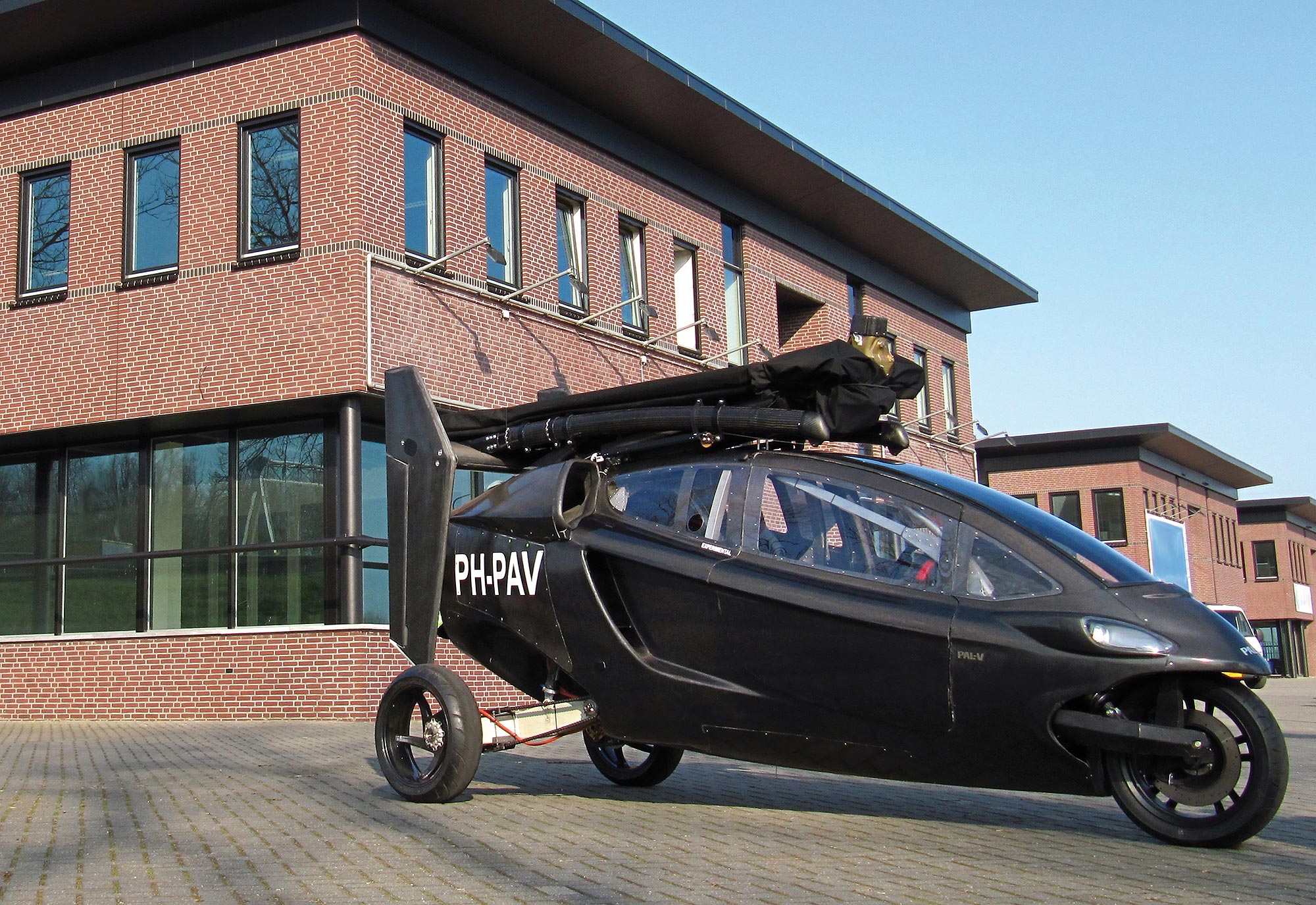







PAL-V has officially started the sales of its flying car models, the Liberty Pioneer and Liberty Sport.
Following the successful test programs of its concept vehicles in 2009 and 2012, PAL-V started designing commercial products. While other flying car manufacturers’ concepts require modified regulations and in many cases not yet existing technologies, PAL-V says it deliberately chose to engineer, design and build a flying car with proven technologies, which is fully compliant with existing regulations.
Founded in the Netherlands, PAL-V says the new model has Italian flair, thanks to collaborations with leading Italian design agencies. The dual engine propulsion drive train is based on two fully certified airplane engine from Rotax, one of the leading manufacturers in aviation engines. While driving, the lowered suspension and tilting cockpit adds to the ‘sports car feel’. In the air, the underlying gyroplane technology guarantees a stable flying platform that supports safe landing even in the event of a total power failure. This in itself is described as 'very' unlikely, thanks to the two engine propulsion solution. However, in case of engine failure the gyroplane can be landed normally in a very small area equivalent to a tennis court. Landing without an engine can be done with +/- 18mph ground speed on a very small spot (30 meters or 100ft). This makes emergency landing, in combination with the unique double redundant drive train of the PAL-V Liberty, 'multiple times safer' than a comparable aircraft or helicopter, says the Dutch company.
Unlike most small airplanes and gyroplanes the PAL-V Liberty is certified under the strict safety regime of EASA (Europe) and FAA (USA). Many countries in the world follow the same rules. On the road, the flying car complies with the applicable road safety requirements. To convert from drive to fly mode or vice versa takes 5-10 minutes.
Because a gyroplane can fly very slowly, it needs very little space to land. Take-off distance ranges from only 90m to 200m (300ft-650ft) and on either concrete or grass airstrips. As it deals much better with turbulence and cross wind you can safely fly the Liberty when fixed wing airplanes have to stay on the ground.
Unlike a helicopter, a gyroplane cannot take off or land vertically, however a it does have ‘significant lower cost’ of ownership compared to a helicopter, since you park it in your garage, costly hangar space it not required. PAL-V says all the tools are in place for safe management of transportation in the sky including 2nd Generation air traffic control. Rules and regulations are in place under the International Civil Aviation Organisation (ICAO) to allow the use of the first models. Owners will need a license to fly with a gyroplane license usually obtained within 30 to 40 hours of training, depending on skill and talent.
"Source: PAL-V"
